What's New
Displaying results 701 - 710 of 4913

Resource | Publications,
The UNAIDS Secretariat, as co-convener of the Global Partnership for Action to Eliminate all Forms of HIV-related Stigma and Discrimination (Global Partnership), was tasked to develop this brief, based on consultations with its Technical Working Group (TWG), to provide evidence-informed guidance to countries on the intersection of stigma related to HIV and COVID-19 in national responses.
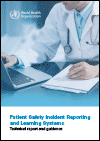
Resource | Publications,
This document is to urge the readers to understand the purpose, strengths and limitations of patient safety incident reporting. Data derived from incident reports can be very valuable in understanding the scale and nature of harm arising from health care, provided that the properties of the data are reviewed carefully and conclusions are drawn with caution. The use of incident reporting systems for true learning in order to achieve sustainable reductions in risk and improvements in patient safety is still work in progress. It can be and has been done, but not yet on the scale and with the speed that compares with some other high-risk industries. That is what we must all strive for. This technical guidance will help the journey to a position where we can show patients and their families how we used this learning to give them care that is safe and dependable, every time they need it.

Resource | Publications,
This is a summary review of progress towards global TB targets, and in implementation of the political declaration of the UN High Level Meeting on TB declaration. Overall the report shows that high-level commitments and targets have galvanized global and national progress towards ending TB, but that urgent and more ambitious investments and actions are required to put the world on track to reach targets, especially in the context of the COVID-19 pandemic.
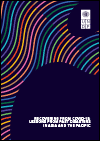
Resource | Publications,
COVID-19 in Asia-Pacific has added to the multitude of risks that the region faces intersecting with natural hazards, conflicts and fragility. More than any previous disaster, the novel coronavirus has exposed underlying risks and vulnerabilities and challenged the traditional notion of risk. The impact on population groups with pre-existing vulnerabilities has been particularly severe especially where the health crisis has turned into a humanitarian and economic crisis.
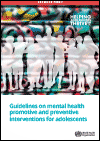
Resource | Guidelines,
The Guidelines on promotive and preventive mental health interventions for adolescents - Helping Adolescents thrive (HAT), provide evidence-informed recommendations on psychosocial interventions to promote mental health, prevent mental disorders, and reduce self-harm and other risk behaviours among adolescents.
The HAT Guidelines aims to inform policy development, service planning and the strengthening of health and education systems, and facilitate mainstreaming of adolescent mental health promotion and prevention strategies across sectors and delivery platforms.

Resource | Publications,
In January 2020, the United Nations launched a global consultation to mark the 75th anniversary of the United Nations. Through surveys and dialogues, people from all walks of life were asked about their hopes and fears for the future, their priorities for international cooperation and for the United Nations in particular.
Since January 2020, over one million respondents from all UN Member States and Observer States have thus far taken part in the consultations, including through representative polling of 50,000 people in 50 countries. The results are presented in this report.
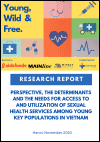
Resource | Publications,
Sexual health services for the YKPs are key programs that contribute to reducing the increased risks of STI and HIV infection, including not only HIV/ STIs services, but also harm reduction, mental health and specialized services for each population. It is essential to understand the characteristics of the YKPs in order to promote their access to sexual health services.
The study, with the sample of 65 people who self-identified as YKP, investigated their views on sexual health and the factors influencing their access to and use of sexual health services. The average age of the participants is 20.5 years old. The age at which they initiated sexual experiences varies widely. Most participants had their first sexual intercourse between the ages of 18 and 20, with the earliest at 14 years old.

Resource | Publications,
Violence against children is an epidemic that does not make headlines. 1 billion children experience violence and abuse ever year, with significant health, educational, social and economic consequences. Considerable gains have been made in recent years, but emerging threats—such as online exploitation and abuse of children—continue to grow.
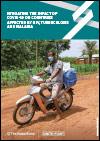
Resource | Publications,
The COVID-19 pandemic threatens to reverse the extraordinary gains made by the Global Fund to Fight AIDS, Tuberculosis and Malaria partnership in the fight against the three epidemics. In 2020 we will likely see increases in deaths and new infections across all three diseases for the first time in many years as health and community systems are overwhelmed, treatment and prevention programs are disrupted, and resources are diverted. In many of the countries most heavily affected by HIV, TB and malaria, the knock-on impact of COVID-19 on these three diseases in terms of incremental deaths may outweigh the direct impact of the virus.
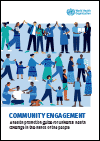
Resource | Publications,
The WHO’s 13th General Programme of Work (2019–2023) set the goal of one billion more people enjoying better health and well-being, which can be achieved only by strengthening community engagement efforts. Community and civil society engagements are fundamental components of any strategy to achieve all health goals and targets of the SDGs. Action on UHC and the SDGs can be expedited if strategies for community engagement are put in place in existing ‘healthy settings’ initiatives and localities that have SDG projects.





